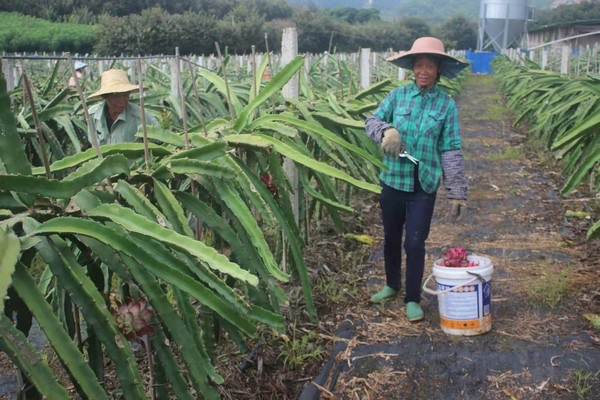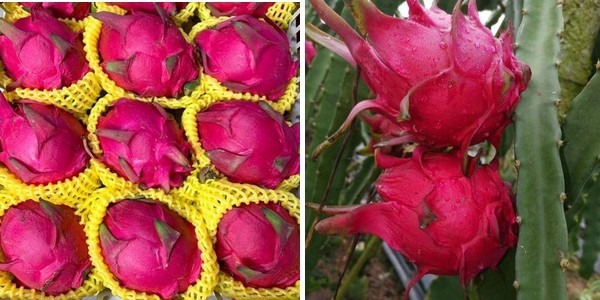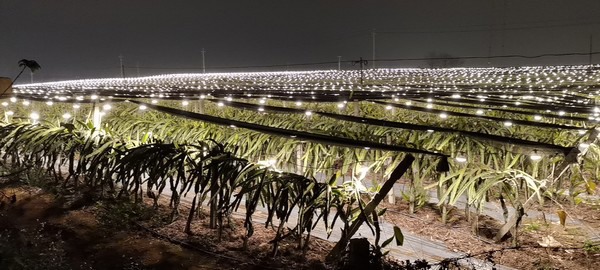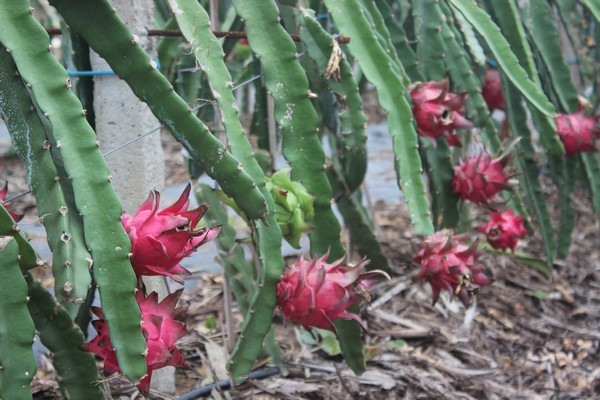The supply volume of Vietnamese dragon fruit to the Chinese market rapidly declined this season as a result of the Covid-19 pandemic. This situation created some commercial opportunities for domestic dragon fruit. A growing number of Chinese consumers is now familiar with domestic dragon fruit brands. Mr. Dong, a red heart dragon fruit farmer from Nanning in Guangxi and spokesperson for Long Yi Sheng Fruit Industry, recently talked about current conditions in the Chinese dragon fruit industry.

Long Yi Sheng Fruit Industry owns a dragon fruit plantation that covers an area of 53 hectares and produces around 2 million kg of dragon fruit per year. "The domestic dragon fruit industry has rapidly developed in recent years. The overall surface area devoted to dragon fruit plantation is quickly expanding. More recently, however, the industry has been in disarray because of the outbreak of Covid-19. Still, farmers have high hopes for the new season.
"Take Wenzhou as an example, this second-tier city in south China sold almost no domestic dragon fruit in 2019. Wholesale dealers pushed the sales of imported Vietnamese dragon fruit. They assumed the product quality of imported dragon fruit was superior. When the outbreak of Covid-19 disrupted the distribution of import products, the supply volume of Vietnamese dragon fruit suddenly declined. Chinese fruit traders gradually shifted their attention to domestic dragon fruit. Wenzhou markets now sell domestic dragon fruit wherever you look," said Mr. Dong.

"As for the price, the period between January and April is the low season for dragon fruit. The production volume is limited, and there is not enough sunshine during the winter season. Large fields require lamps at an interval of only a few meters, and these lights are required for a total of around 45 days. The energy prices are rising, and so the price of dragon fruit goes up. In addition, the small production volume means that there is a supply shortage in winter. That is why the price is rising. The current price of dragon fruit in Guangxi is around 7-8 yuan [1.07-1.23 USD] per 0.5 kg. The price is expected to remain high until June when the production volume of domestic dragon fruit will go up."

"Domestic dragon fruit is usually harvested at 80% or 90% ripeness. Vietnamese dragon fruit, however, is harvested at 70% ripeness because transport takes longer. That is why the Vietnamese dragon fruit looks fresher and brighter, but the flavor is not as good. Domestic dragon fruit is juicier and sweeter. The flavor of domestic dragon fruit is altogether better than the flavor of Vietnamese dragon fruit," explained Mr. Dong.
"The vast majority of Chinese consumers have been unaware of the dragon fruit production areas in China. Now that the domestic dragon fruit brands are gaining recognition, domestic dragon fruit farmers are growing in number, and the annual production volume grows every year. Nanning in Guangxi is one of the main dragon fruit production areas. Guangxi has between 8 and 10 dragon fruit harvests per year. The peak period of the production season takes place in April and continues until January in the subsequent year. The overall surface area devoted to dragon fruit plantation in Nanning was around 2,667-3,333 hectares in 2018 but increased fourfold in less than three years to 12,000 hectares in 2020."

"European friends tell me that dragon fruit can cost as much as 7 euros a piece in a European supermarket, and Chinese dragon fruit is rarely seen in the European market. That is why we considered exporting our dragon fruit to Europe, but the outbreak of Covid-19 has put our plans on hold for now. We hope this year will give us the opportunity to explore the export market and bring the delicious flavor of our dragon fruit to even more consumers across the globe!"
For more information:
Mr. Dong
Tel.: 18176235439
WeChat: 18176235439
E-mail: 1091834512@qq.com
